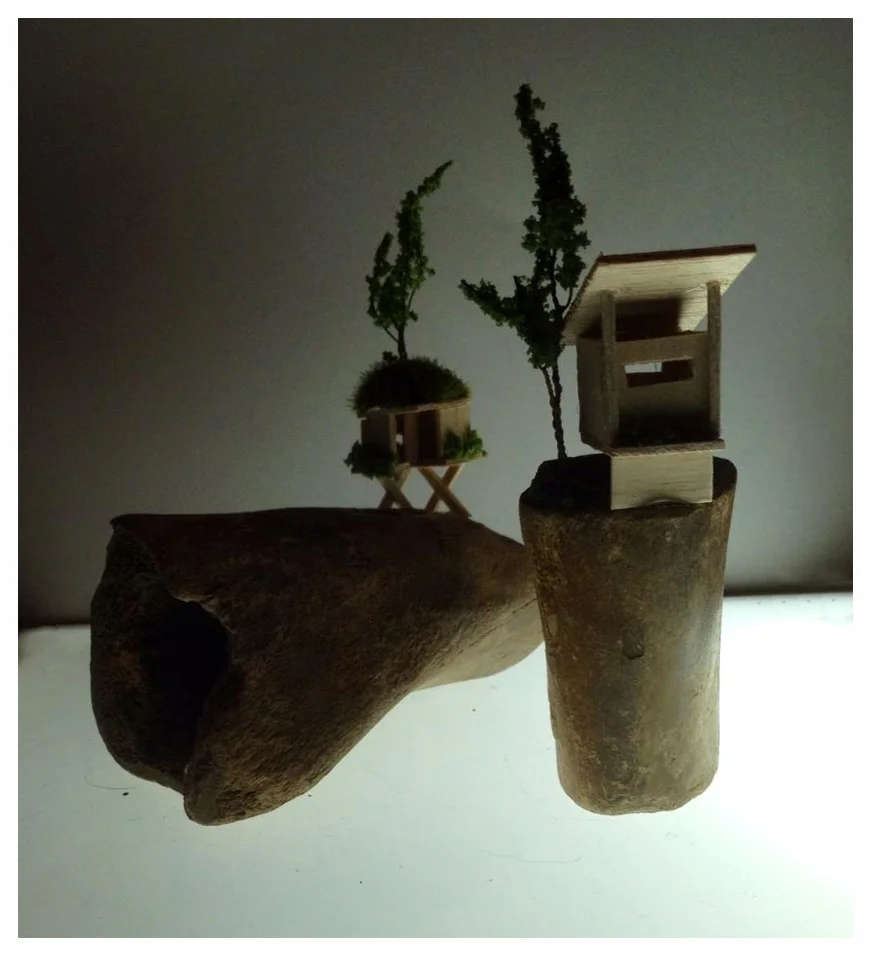Broken baby dolls and animal bones
that’s what I found at Dead Horse Bay
Pets used to come here
and leave as glue
So if you hear a bark or neigh…
Waves lapped at its rust and leaked out the spout. Tepid where it used to boil.
The teapot had once lived in Brooklyn after it lived in New Jersey after it lived in France after it lived in Germany and so on back to the earth’s iron ore. In Brooklyn, a woman’s fingers recovered moldy tea leaves from the kettle-sized space on the mantle. She relit a joint.
Portrait of the Artist as a Headless Dutch Boy
I carried pails of water once, too.
Seawater, up along the shoreline
to dryer sand. I picked out seaweed and shells.
I read about Dead Horse Bay while researching odd spots in NYC for my blog, This Hidden City. I had to see it for myself, and visited on Halloween, a little after low tide ended. It was a mild, but windy day. I parked too far, and it took forever for me to find an entrance to the bay. While I did take a few photos, I could hardly believe what I had seen. I returned with my girlfriend the following week, at the most extreme low tide. It was a colder, though less ominous day. I knew my way around this time, and did a bit more exploring. These photos are from both visits.
Dutch Doors open disjointedly: a dark Cartesian dream. Say hey: the head swings here without the body. While down below, a body beasts beneath the head: wild as the waters, beating its chest. All brawn: bah dum bum dum bum dum.
WATER WATER EVERYWHERE my doll, my decapitation
is very political. My ass burns
on the roof of a Cadillac.
Pink wind, cold sun. In this quiet light,
you watch her roam the bay. You produce
a solitary prayer—bodega rose, talisman.
Read More1.
It isn’t really a stop, but when I ask him to, the bus driver’s happy to drop me off just before the bridge, right across from the old airfield.
I follow the dirt path on foot. Dry grasses with dun-colored seed-fringes sway in the wind. Low bushes twist knee-height, laden with red winter berries. Everything here is sparse and tight. Salt-stunted growth. The way is turning to sand. I climb the hill and the sky opens to water.
“Of all the sights a horse-rending plant offers to the world, a horse is not one"
-Plutarch
Read More
When the cars on the overpass see me
it will be out of context—knee deep in a bay
lined with horse bones sorting my nets
as one prepares the body for sleep.
The circumstances of separation, the severing of fin from torso, were simple. It began slow and subtle. The rot spread from scale to scale, made the iridescent shine of her tail dull. Summer slipped into fall, the rot continued its advance unnoticed. During winter, the cold slowed the process of decay. But as the waters warmed again, spring then summer, she could no longer ignore the rapid rate at which her body altered. How had it started, this change, this disassembly of parts?
I've been collecting horse bones at Dead Horse Bay for several months now, re-imagining the edges as Southern California cliffs holding up Mid-Century modernist houses.
I call out that I’ve found a bone, a spinal vertebra perhaps, and I begin to pull away the seaweed and sand crabs from where the marrow once was. The friend I've brought here appears at my side and I hand him the horse bone. He turns it over in his hand; it looks more like wood than bone from years of being tossed and aged in the bay. We keep pawing through the broken bottles and tinker toys littering the shore and find a very bone looking bone: long and thin in the middle and bulbous on the ends, like a dog toy or a bone you’d see in a cartoon. We are preoccupied with this carnal treasure hunt. We have done the remarkable: we have found a certain joy in death.




![["There was a young man from the Netherlands..."]](https://images.squarespace-cdn.com/content/v1/5d52d8b94f05250001cea6b9/1570473649682-42LTFMR44PXW4TQGMTOR/image-asset+%2816%29.jpeg)


